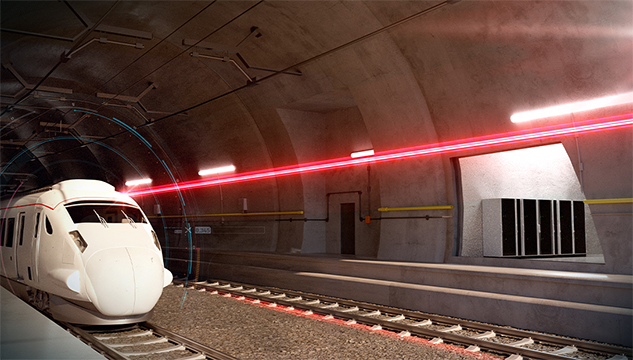
Posted to News on 2nd Nov 2022, 09:18
Outdoor enclosures – the unsung heroes

When equipment has to be placed outdoors, it’s not just one factor that has to be considered. Unlike indoor applications there are so many more variables for outdoor enclosures that need to be taken into account, as the experts at Rittal explain.
Outdoor enclosures, the ones you see beside the road, on the pavement, trackside on the railways, the ones you walk past every day without giving them a second thought, these metal boxes, more often than not contain highly critical equipment that is fundamental to our everyday life.
Outdoor enclosures need to be many things, they have to be functional and flexible to house various forms of equipment, they have to be aesthetically pleasing whilst also being secure enough to be placed in both remote and busy public spaces. Surviving the elements is another critical feature, they could be placed outdoors for in excess of 10 years whilst dealing with the hottest summers and harshest winters. Whilst outdoor enclosures may seem a fairly innocuous feature there’s actually a great deal of design and innovation in them.
Heat and humidity in the summer, cold and ice in the winter, not to mention the wind and rain, all have an impact. Faced with the elements, the enclosure design, construction and material used need to withstand everything the weather can throw at it. Using powder coated aluminium means the enclosure is protected from the outside elements.
Rittal also gives the enclosure a double skin. This helps with the UV solar gain during warmer times, protecting the equipment internally just that little bit more from overheating. Alternatively, if cooling (passive or active) is required, the dual casing makes this more manageable. A double skin also means additional heat when the temperature drops, rather than the heat dissipating quickly through the walls of the cabinet. Heat from the equipment or an internal heater means critical equipment can be kept at its optimum working temperature whether it’s summer or winter. And a double skin means better protection from intentional or accidental damage.
Outer skins can easily be replaced bringing the enclosure back to its original condition, with the inner skin protecting the internal equipment whilst the repair works are being carried out. There’s no need to replace the whole enclosure if only the outer shell is damaged.
IP rating
For outdoor enclosures one key element is the Ingress Protection (IP) rating. Rittal suggests an IP55 rating as being sufficient for an outdoor enclosure. This means the cabinet is protected from wind driven rain and dust.
Seals and security
What is of great importance is that the enclosure is designed so that standing water does not pool on the enclosure or sit on the enclosure seals. If the seals are protected, then the risk of leakage into the enclosure is low. Enclosures where water can sit for a prolonged period of times means eventually a breakdown in the seal material. If this standing water then goes onto freeze it can cause a gap between the enclosure door and housing. Overhanging roofs that fully protect the enclosure door seal is an imperative design feature that must not be overlooked when placing such a product outdoors.
Security is critical outdoors, whether this be specific lock types dependent on customer and application, or maybe even where remote access could be required. These features need to be options to give the end client peace of mind. Whether the cabinet is in a crowded busy town centre, in a remote area or an airport runway, access to the inside of the enclosure needs to be limited as much as possible to those who don’t have the authority.
Whilst the outer design of the cabinet is arguably the most important, the internals of the cabinet need to be versatile, flexible and also future proofed. Technology moves at such a rate these days that in some instances by the time a system is deployed the electrical components within it have been superseded. Having a more flexible system for mounting within the cabinet can mean the ability to upgrade at a later date using the existing enclosures. By doing so it reduces the need for downtime, reduces labour and parts costs and overall saves the end client time and money by allowing a system to be online in a shorter timescale.
The need for outdoor systems is increasing due to the ever-expanding requirement for all things to be connected. This need will only increase but it is paramount that when a system is to be placed outside serious consideration is given to the design of the housing that the critical infrastructure equipment will sit in. Whether it be telecoms, rail, airports or highways the overriding factors are the same. Protection from the outside world is key.
Click here to learn more about Rittal’s outdoor system solutions.
Want the latest machine building news straight to your inbox? Become a MachineBuilding member for free today >>
Braithwell Way, Hellaby Industrial Estate
Hellaby
S66 8QY
UNITED KINGDOM
+44 (0)1709 704000

















